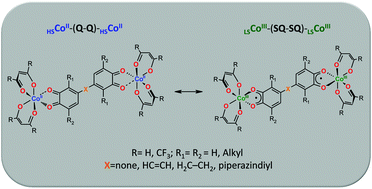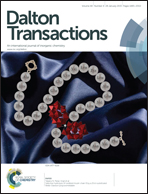Valence tautomeric dinuclear adducts of Co(ii) diketonates with redox-active diquinones for the design of spin qubits: computational modeling†
Abstract
The possibility of employing the mechanism of intramolecular electron transfer between metal and ligand centers in the valence tautomeric complexes formed as electrically neutral 2 : 1 adducts of Co(II) diketonates and redox-active tetradentate di-o-quinones, for quantum information processing, has been computationally studied using the DFT B3LYP*/6-311++G(d,p) method. It has been shown that by the proper choice of a linker group bridging the quinone rings and substituents in the diketonate fragments, complexes with the properties required in 2-qubit quantum gates (sufficiently narrow energy gaps between the spin states and weakly coupled paramagnetic centers) can be designed, in order to realize the mechanism of thermally driven migration of paramagnetic centers between the o-quinone fragments and metal atoms. These are exemplified by the adduct of bis-(hexafluoroacetylacetonate)Co(II) with a diquinone containing dimethylene linker. Valence tautomerism is considered as a new, promising mechanistic paradigm for the molecular design of 2-qubit molecular systems.


 Please wait while we load your content...
Please wait while we load your content...